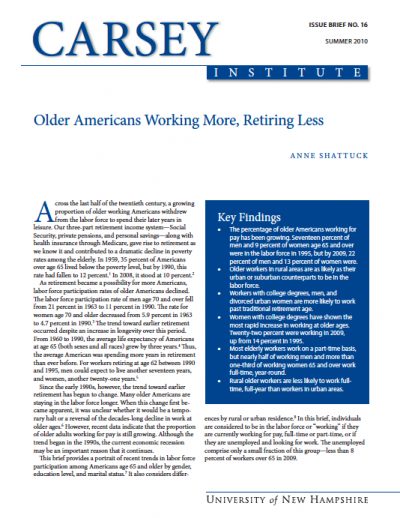
The percentage of older Americans — those age 65 and above — has been on the rise since the early 1990s. This brief examines workforce trends for this population by gender, education level, marital status, and rural versus urban settings.
The percentage of older Americans in the labor force has grown steadily since 1995. While most working older Americans have part-time/ or easonal jobs, more and more are working full-time, year-round jobs.
We hope you'll find value in this report. We’d love to get a little information from you, which we'll use to notify you about relevant new resources.